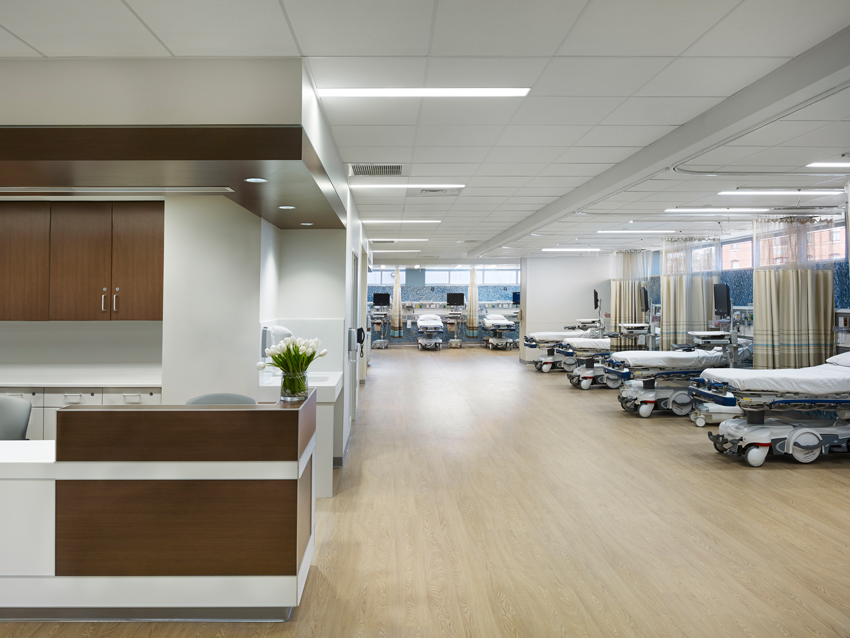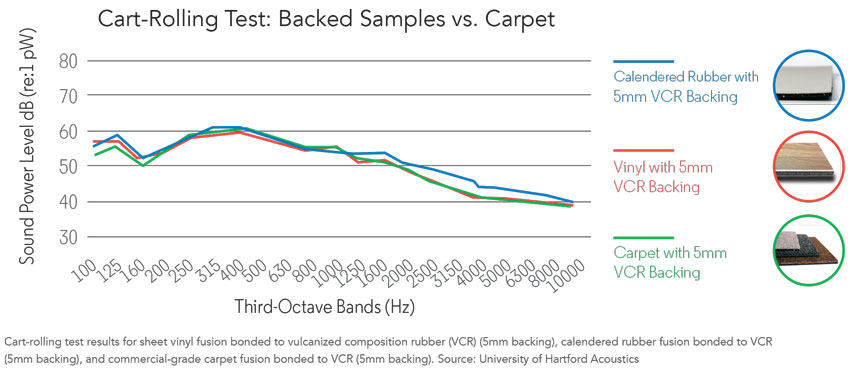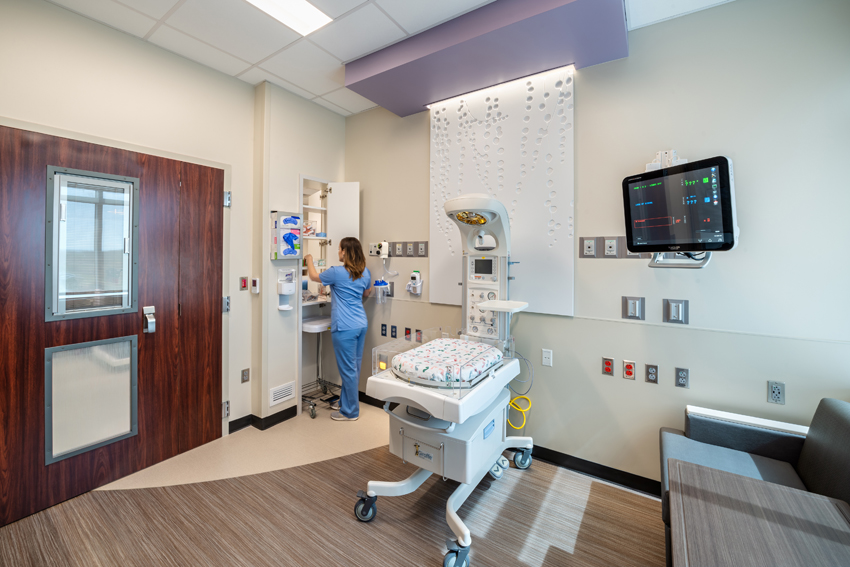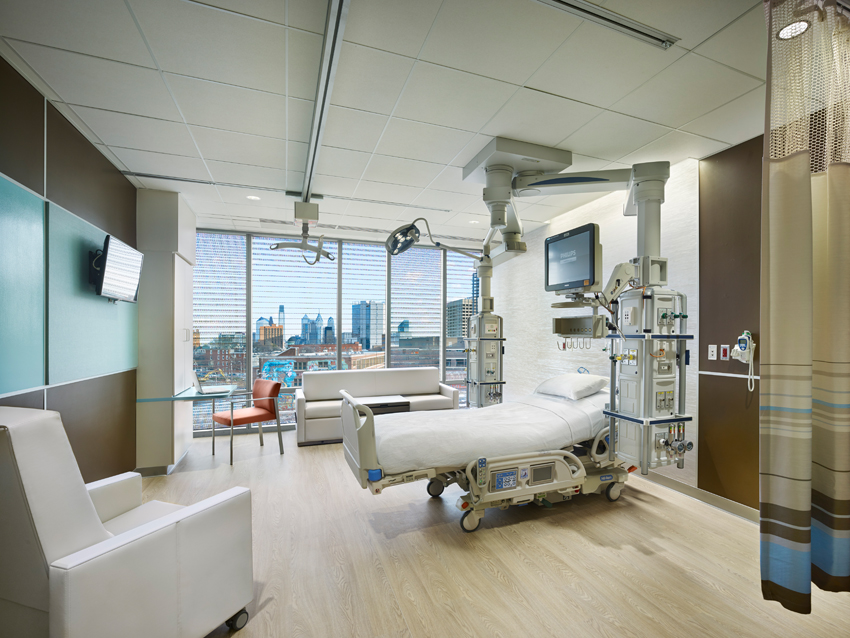Health-Care Flooring for the New Normal

To create an environment conducive to healing, the designer should specify flooring with proven acoustical benefits.
Measuring the Impact of Flooring on Sound
To compare the effect of different flooring materials on surface-generated sound in health care, the University of Hartford Acoustics program in 2014 conducted an independent research study titled “Contribution of Floor Treatment Characteristics to Noise Levels in Health-Care Facilities.”14 Two senior acoustical engineering students chose to undertake this topic for a semester-long research project. It aimed to quantify the influence different flooring materials can have on hospital corridor noise.
While there are many noise sources within a hospital, one potentially significant source can come from the hallways and corridors, where regular traffic can include both footfall from staff and visitors, and rolling noises from medical carts and gurneys. The University of Hartford recognized that addressing these noise sources could positively affect the acoustic environment in patient rooms.
The students conducted three different tests on each surface material: an absorption test (ASTM C423), a tapping machine test, and a rolling cart test. The materials tested included carpet tiles with a vulcanized composition rubber backing, sheet vinyl, sheet vinyl with a vulcanized composition rubber backing, virgin rubber sheet, and virgin rubber sheet with a vulcanized composition rubber backing. Three of these products featured a patented technology, whereby a wear layer was fusion-bonded to a vulcanized composition rubber backing. The goal was to determine how effective this technology is in reducing noise when added to vinyl and rubber surfaces, and compare these results to standard commercial floors, such as carpet and other traditional resilient sheet products—the third option mentioned above.
The study found when a vulcanized composition rubber backing was fusion bonded with a vinyl surfacing, it was as quiet as commercial carpet when rolling a medical cart across a room or with standard footfall. An added benefit is that this surface is more conducive to meeting sanitary maintenance requirements of the healing environment. This clearly solves a multitude of problems in health-care settings.

A rolling cart test at the University of Hartford Acoustics program demonstrated that when a vulcanized composition rubber backing was fusion bonded with a vinyl surfacing, it was as quiet as commercial carpet.











